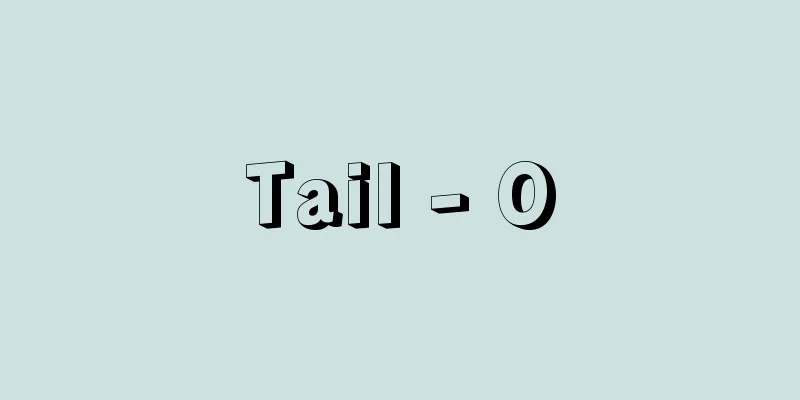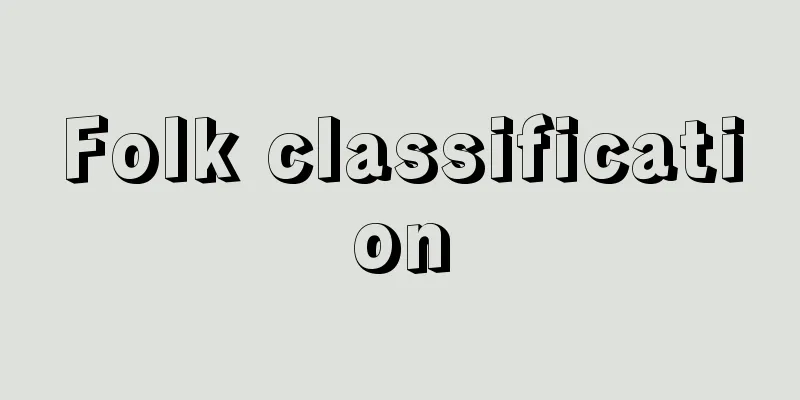Tail - O

|
A protrusion at the rear end of an animal's body. The front end of the body is usually a complex head with a developed brain and sensory organs, while the rear end is a simple tail. For example, the tail of a vertebrate is generally long and slender, with the tail vertebrae at the end of the vertebrae covered with flesh and skin, and without a body cavity or internal organs. Even animals without tails, such as humans and apes, have a bone called the coccyx (tailbone), which is formed by the fusion of several tail vertebrae. The bone at the end of the vertebral column of tailless amphibians and birds, which is also formed by the fusion of tail vertebrae, is called the pygostyle (often confused with the coccyx), and in birds, tail feathers are attached to it. It is well known that the tails of monkeys, who live in trees, can be used like hands, such as by wrapping them around tree branches to support the body, and the tails of lions and cheetahs are said to function as rudders when sprinting. Mammalian tails have a wide range of uses, including chasing insects that fly onto the body, helping with jumping and climbing, and even for keeping warm and expressing emotions. Usually, when we think of a tail, we imagine the part behind the anus, but in many invertebrates, the anus is at the rear end of the body, and there is no discernible boundary between the torso and the tail. For example, in insects, the thorax and abdomen are clearly separated, but it is not clear which part of the abdomen is the tail. Also, the flagellum of protozoa and sperm is sometimes called a tail because it resembles the tail of the animal body. [Masayuki Uchibori] Source: Shogakukan Encyclopedia Nipponica About Encyclopedia Nipponica Information | Legend |
|
動物の体の後端にある突出物。体の前端部は普通、脳や感覚器が発達した複雑な構造の頭となっているが、後端部は単純な構造の尾となっている。たとえば脊椎(せきつい)動物の尾は一般に、脊椎骨の末部である尾椎を中軸として肉と皮膚で覆われ、内部に体腔(たいこう)や内臓を含まず細長くなっている。ヒトや類人猿などのような尾のない動物でも尾骨(尾骶(びてい)骨)という、いくつかの尾椎の癒合により生じた骨がある。無尾両生類や鳥類の脊柱の末端にあり、やはり尾椎の癒合により生じた骨は尾端骨(尾骶骨としばしば混同して使用される)とよばれ、鳥類ではこれに尾羽がつく。樹上生活をするサルの尾には、木の枝に巻き付けて体を支えるなど、手のように役だつものがあることはよく知られており、またライオンやチーターなどの尾は、疾走するとき、方向舵(だ)の働きをするといわれている。ほかにも、体表に飛んでくる虫を追う、跳躍や木登りの補助に使う、さらに保温や感情表現に用いるなど、哺乳類の尾の用途は広い。 普通、尾といえば肛門(こうもん)より後ろの部分を想像するが、無脊椎動物の多くでは肛門は体の後端部にあり、胴と尾との境は認められない。たとえば昆虫の場合、胸部と腹部とは明らかに区別されるが、腹部のどの部分を尾とするかはわからない。また、原生動物や精子などの鞭毛(べんもう)を、動物体の尾と似ていることから尾とよぶこともある。 [内堀雅行] 出典 小学館 日本大百科全書(ニッポニカ)日本大百科全書(ニッポニカ)について 情報 | 凡例 |
>>: Trillium smallii (English spelling)
Recommend
Canis rufus (English spelling)
…[Tokuji Chiba]. … *Some of the terminology that ...
Stilbum cyanurum pacificum (English name) Stilbum cyanurumpacificum
…[Shiro Katsuya]. . . *Some of the terms mentione...
odd pricing
...(1) includes (a) cost-plus pricing, which adds...
EDR (European Depository Receipt)
…The first Japanese company to issue ADRs was Son...
Cosmic Horizon - Uchu no Chiheisen (English spelling) cosmic horizon
The horizon is the theoretical limit of what can b...
Mojave Desert
A desert located in southern California, United S...
Isobe Seven Villages
…In 1353 (Shohei 8, Bunwa 2), a dispute arose ove...
Orientales (English spelling)
...In literature, early examples include Galland&...
Law school
American law schools. In American universities, no...
"The Swordsman's Manual by Master Ittosai"
…The theorization of swordsmanship, influenced by...
Order of exchange - Order of exchange
A style of ancient Japanese document. Also known s...
Kanjin Hijiri - Kanjin Hijiri
A monk who traveled around the country to solicit ...
Jambudvipa
It is a transliteration of the Sanskrit word Jamb...
Kamouenai [village] - Kamouenai
A village in Furu District, Shiribeshi Subprefectu...
Oath - Oath
...After the glacier disappears, the sand and gra...





![Franz [II] - Franz](/upload/images/67ccbcc791ec0.webp)



